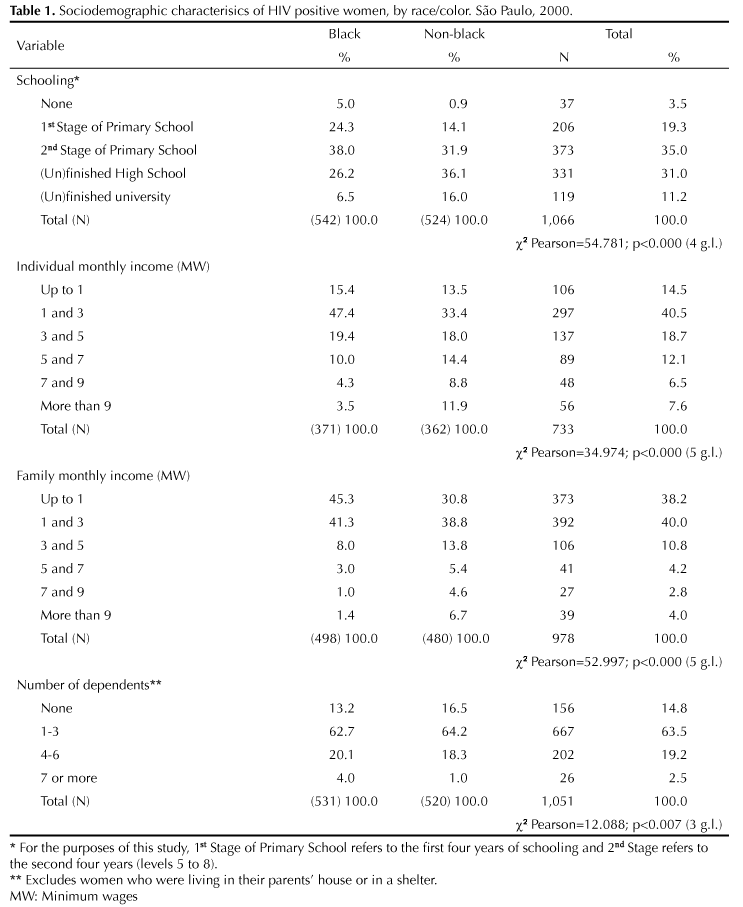OBJECTIVE: To analyze the characteristics related to individual vulnerability among HIV seropositive women, according to skin color. METHODS: A multicenter study carried out between 1999 and 2000 in health services specialized in STI/Aids in the state of São Paulo, involving 1,068 women living with HIV who are aged 18 or above. Sociodemographic data and characteristics relating to infection and healthcare were obtained by means of individual interviews based on standardized questionnaire. The variable race/color was self-reported and women who referred to themselves as black or mixed-race were grouped together as black. The definition of variables by race/color was done using central tendency and proportions, and an association analysis using the chi2 Pearson test. RESULTS: The differences between black and non-black women were statistically significant with regards to: schooling; monthly, individual and family income per capita; number of direct dependents; opportunities to see a nutritionist, gynecologist or other medical professional; understanding what the infectologist said; speaking with the infectologist or gynecologist about her sex life; having correct knowledge about CD4 exams and viral load; the sexual means of exposure. CONCLUSIONS: The use of race/color as an analytical category provides opportunities to understand better how social interactions, in the context of gender and socioeconomic conditions, create and recreate disadvantages for black women and their exposure to health risks, and also impose limits on the way they use of resources for their healthcare.
Acquired immunodeficiency syndrome; Women; Race or ethnic group distribution; Ethnic group and health; Health vulnerability; Multicenter studies



